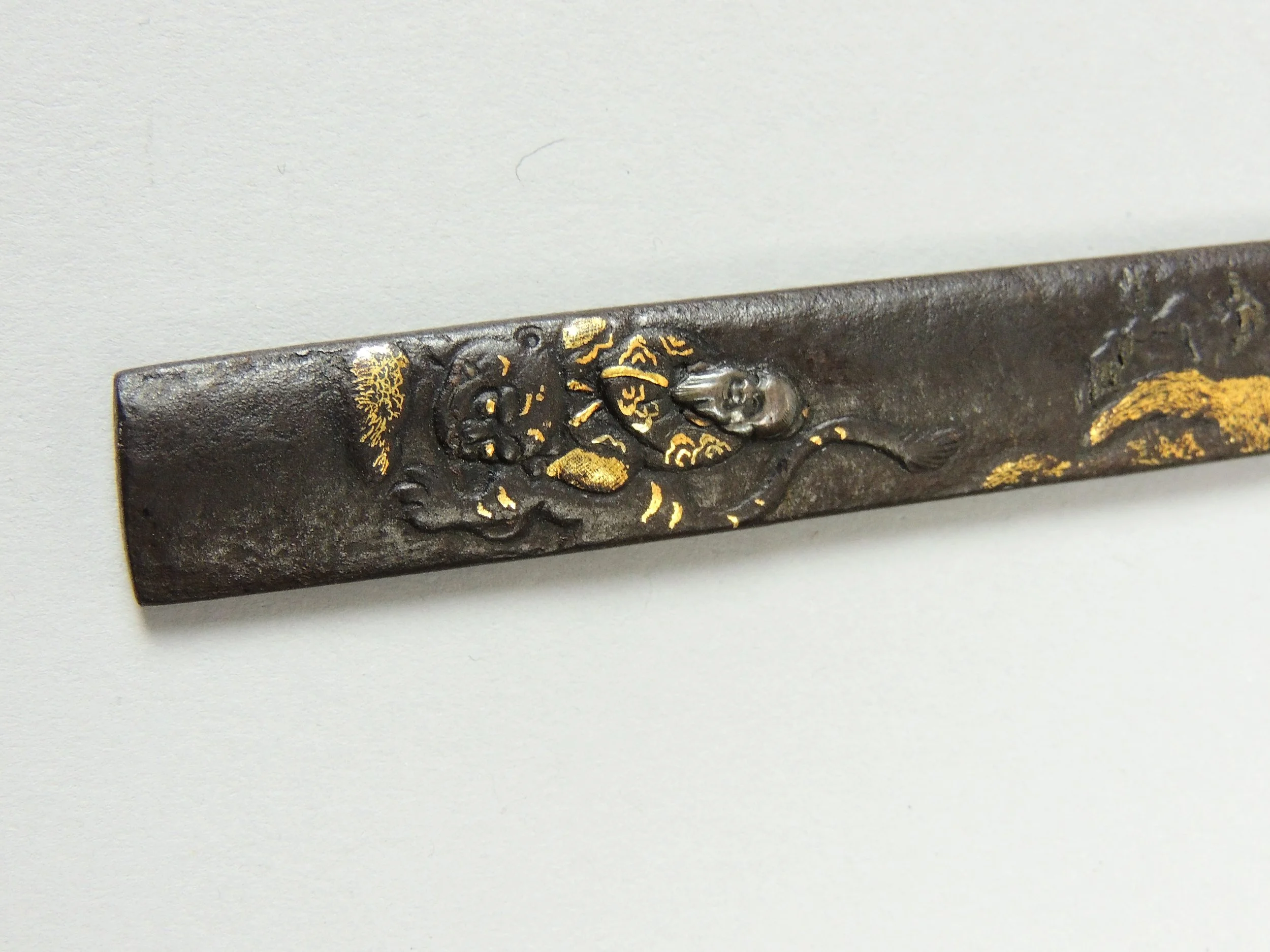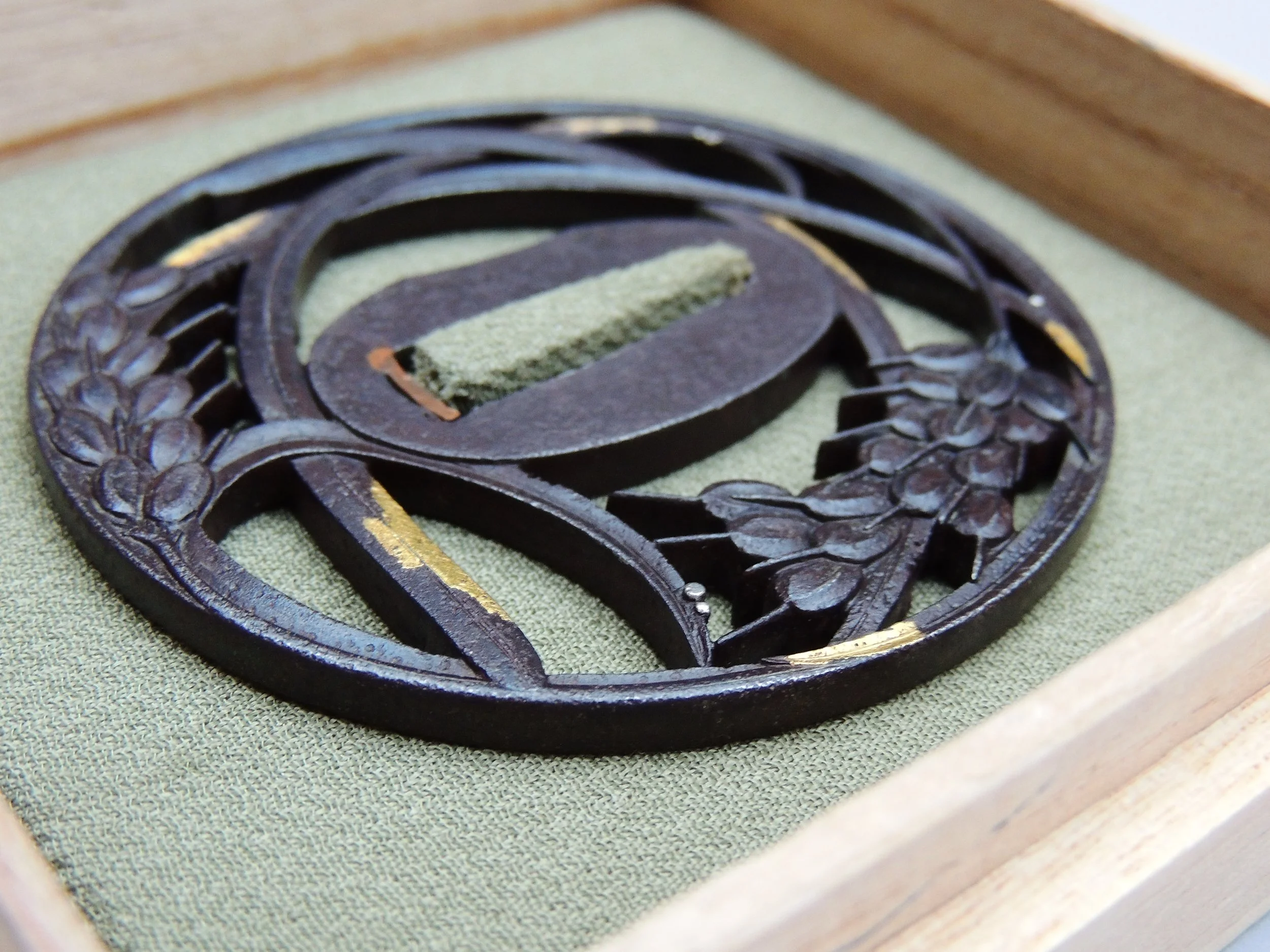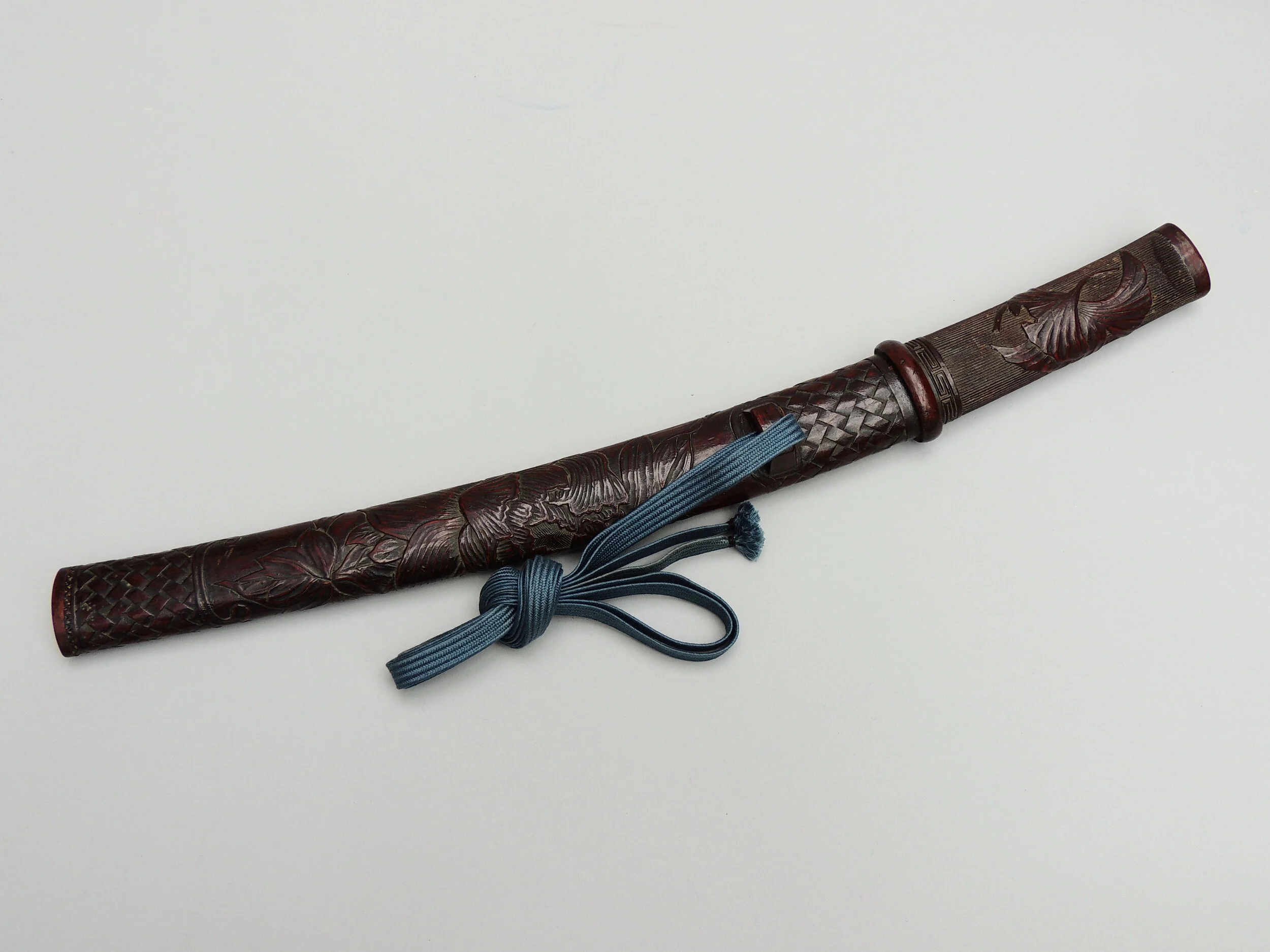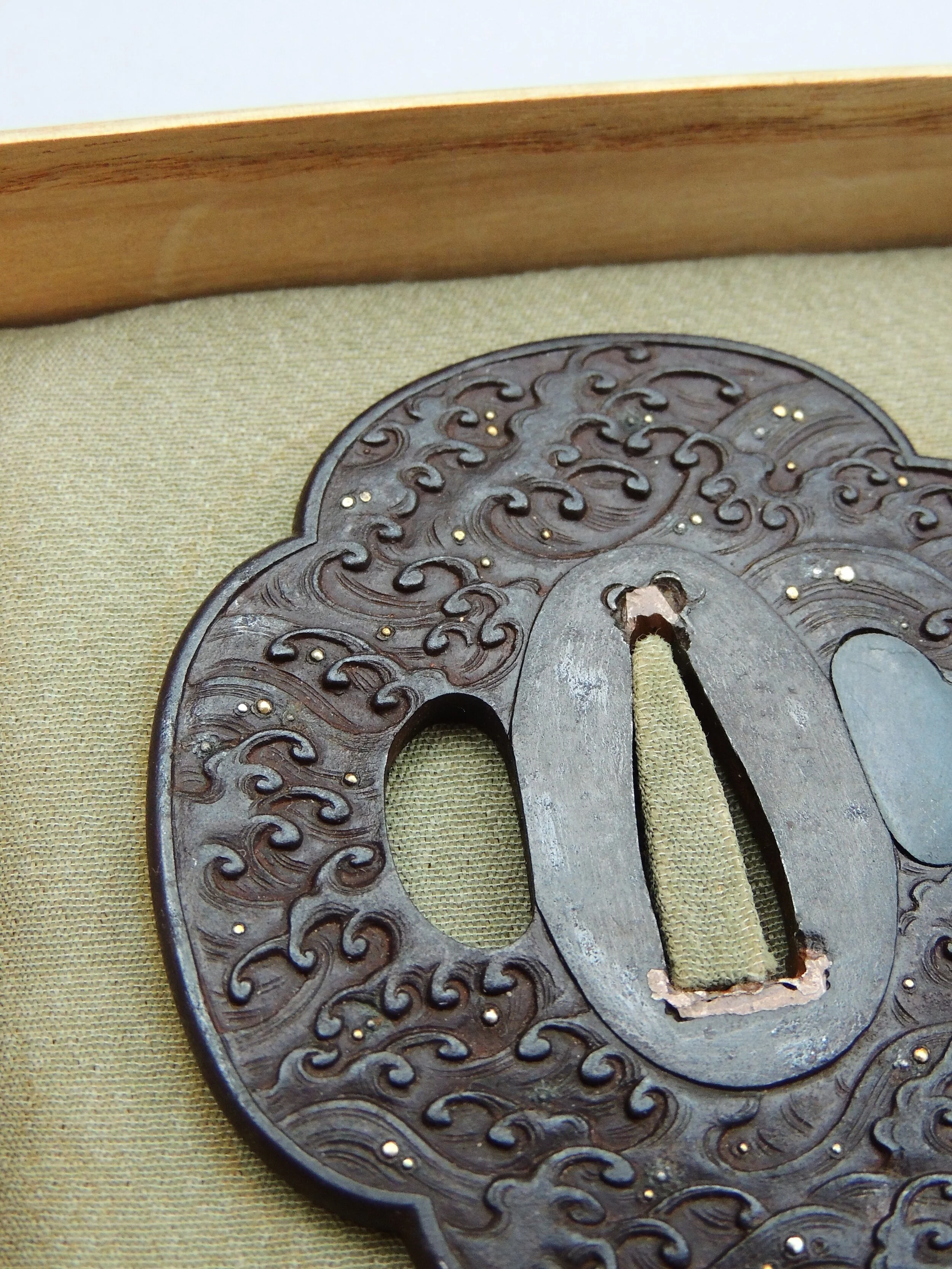Anonymous
Edo period, 18/19th century
1615-1868
Wakizashi
An Edo period wakizashi signed by Kuni Suki. Many smiths signed with this signature and so is difficult to pinpoint a specific maker. Saya in roiro ground agoai nashiji makie and antler kojiri, the butt of the sword. Bronze and gilt fuchi and kashira in samurai design. A silver menuki in the form of a dragon with ray skin and a black silk braid handle. The Tsuba is iron openwork in a wisteria motif. The wisteria in Japan symbolised long life and immortality making it a fitting symbol to have on a sword probably in the belief it would protect the user.
Signed KuniSuki
620mm x 70mm
Kogatana
Edo period 18th century
1603-1868
A agoai nashiji makie Kozuka.
unsigned kogatana
unsigned kozuka
214mm x 13mm









